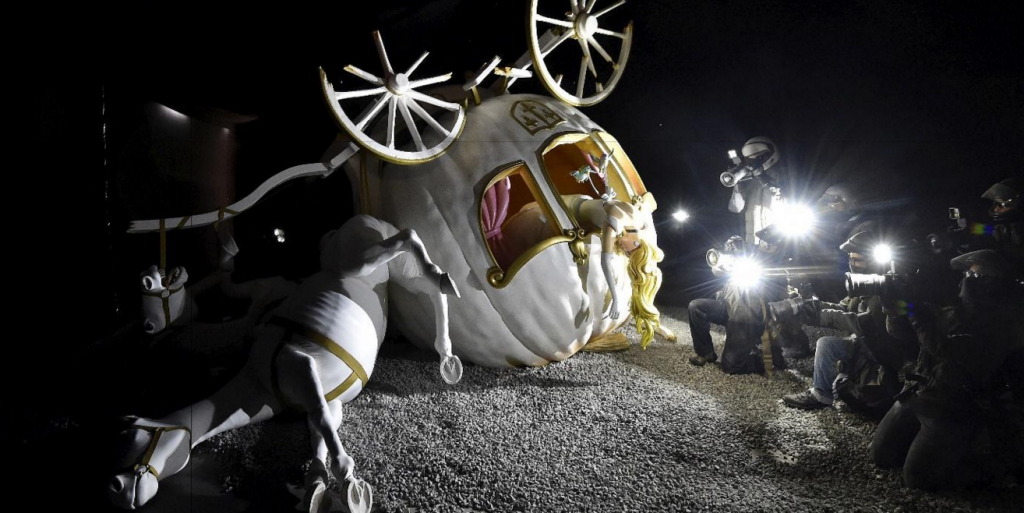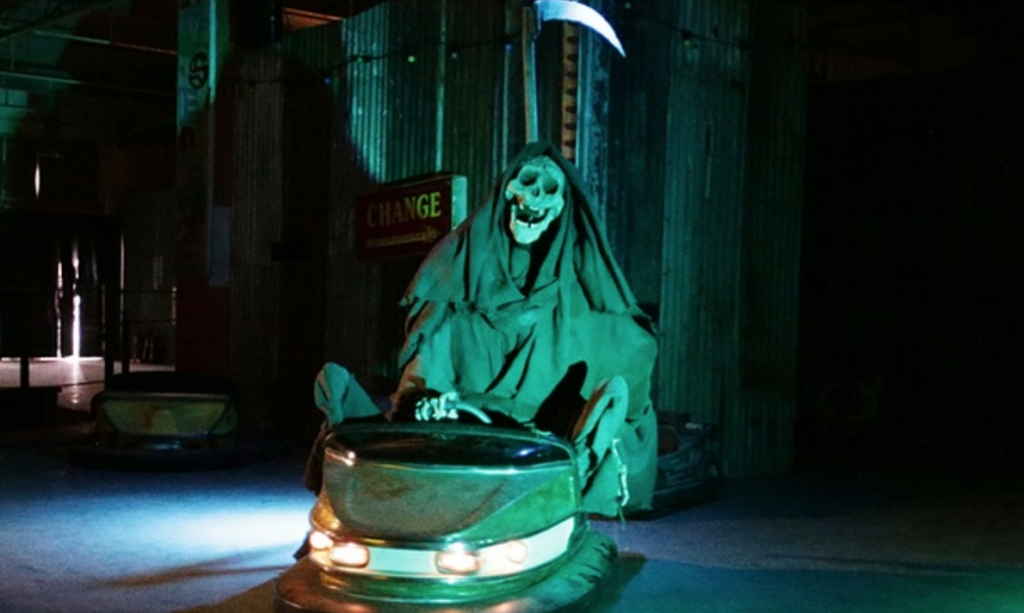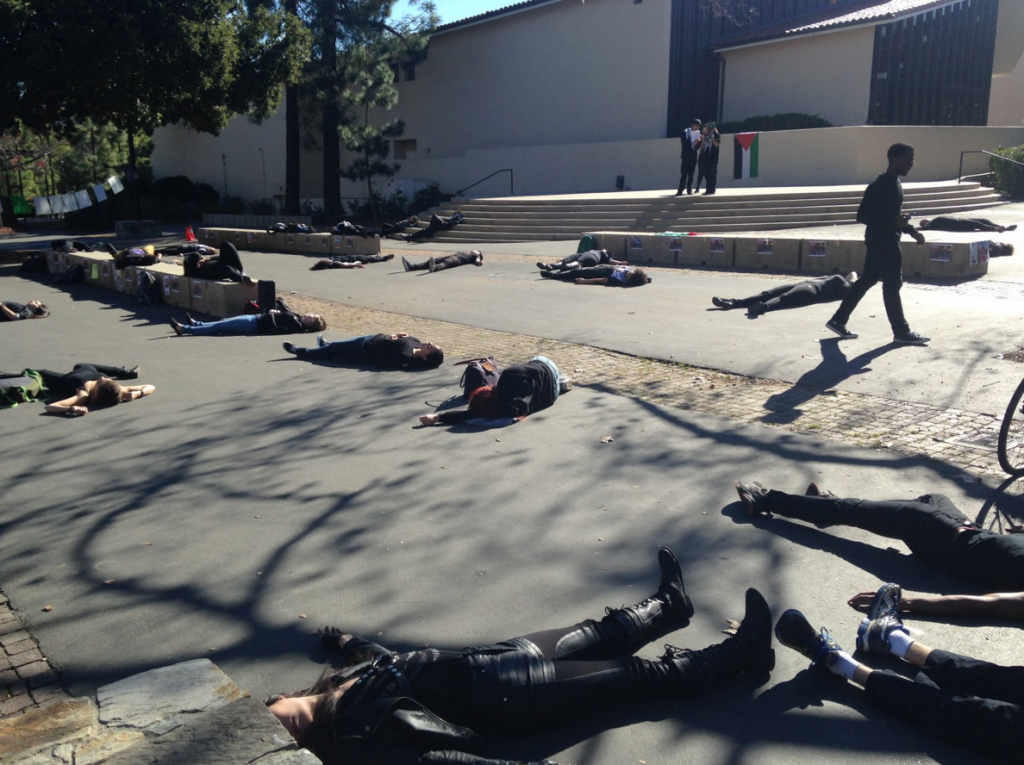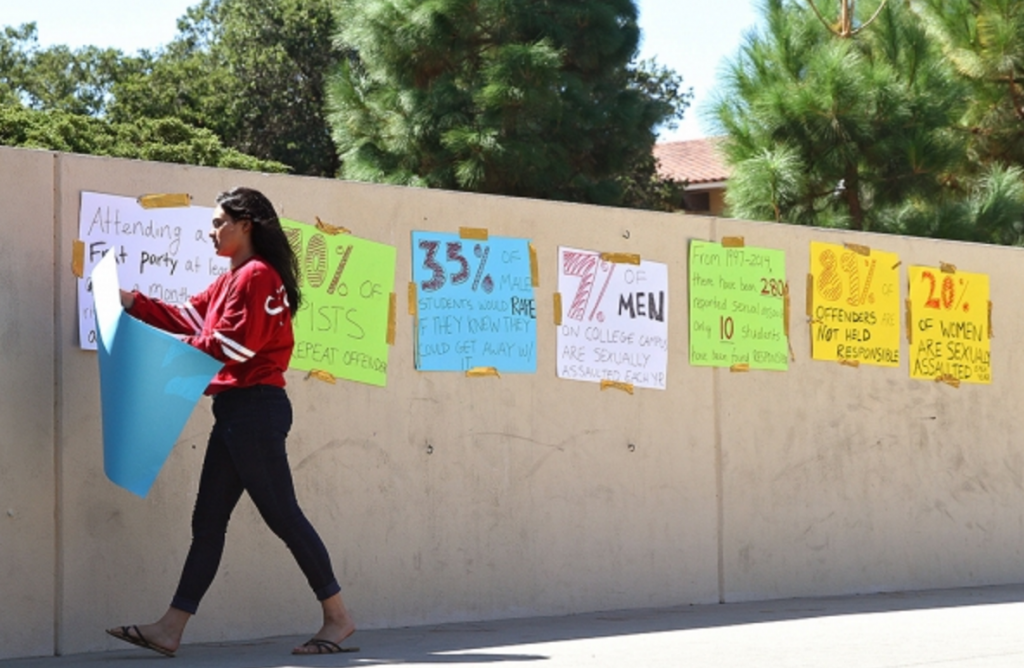[](/content/images/cinderella.png)The Death of Cinderella in Dismaland. Source: The GuardianNudelman’s perspective is that Disneyland represents a world where all dreams come true and Dismaland flips that illusion of perfection and possibility in an obvious way. Likewise, at Stanford, social justice warriors have engaged in performances–including die-ins, shutdowns, and signs–to uncover what hides under Stanford’s facade of perfection. However, despite their goal of employing shock art to disrupt the viewer’s consciousness, both Dismaland and the recent “art” and performances at Stanford do not actually succeed. Instead, the very shocking style driving this art has become so overutilized that it has become kitsch: one-dimensional art that does not have any effect on its viewers.[](/content/images/gokart.png)Death Riding a Go-Kart in Dismaland. Source: Mirror“Kitsch” entered the world’s lexicon in 1929, when Clement Greenberg published [“Avant-Garde and Kitsch”](http://www.sharecom.ca/greenberg/kitsch.html). For Greenberg, “avant-garde” artists created “something valid solely on its own terms… something… independent of meanings, similars or originals”, Greenberg wrote. Avant-garde’s originality were contrasted with“kitsch”, which Greenberg defined as formulaic art with obvious and trite messages. In a kitsch piece, an angel would represent purity and supernatural goodness whereas an avant-garde one would depict angels as morally ambiguous or even wicked. Another example is Marcel Duchamp who obtained a urinal and displayed it as a piece of art called [The Fountain](http://www.sfmoma.org/explore/collection/artwork/25853)” in 1917. The Fountain raised questions about what art truly is and whether private and/or unsanitary acts, such as urinating, or taboos could ever be seen as public and/or artful.
Banksy’s Cinderella exhibit at Dismaland does not incite these same questions. Instead, it relies on a now overused method that has transformed the avant garde to the kitsch. Cracking the veneer of perfection, dreams, and acceptable behavior to uncover moral and social ills has become a constantly-applied formula that conveys a simple one-dimensional message to the viewers. In Banksy’s case, his theme is of the immorality of the media, especially when covering tragedies, such as Princess Diana’s.
At Stanford, that overarching idea is that Stanford cannot ignore global injustices. For example, last year, Students Out of Occupied Palestinian staged a “die-in” to “perform” the deaths of everyone killed in Gaza. In the same fight for social justice, 68 students made headlines when they blocked the San Mateo Bridge. Both of these public action hoped to inspire sharp anger and disgust for social ills and desire for change into their audience. Meanwhile, during Admit Weekend, “President Hennessy doesn’t care about you” flyers papered dorm walls, “Stanford Funds Oppression” slogans covered the pavement, and signs reading “funding corruption” and “action then dialogue” posters greeted potential freshmen heading Memorial Auditorium. The new academic year has already brought signs of the same techniques with a can’t-miss-it “Rape Happens Here” sign in White Plaza accompanied by harsh statistics on the rate of sexual assaults in universities.
[](/content/images/die_in.png)The “Die In” in White Plaza. Source: Johnathan BowesThe “die-in” and Silicon Shutdown may have been successful at the time in evoking conversation, and the “Rape Happens Here” posters may have alerted a new generation of Stanford students to their new campus. However, the effectiveness of these performances has been diminished by their repetition. Many Stanford students will, if they haven’t already, become so saturated with this shock value technique that it has lost its effect.[](/content/images/white_plaza_stats.png)Statistics about Sexual Assault, Aiming to Shock White Plaza Visitors. Source: Palo Alto OnlineAlthough these performances posters, manifestations of shock value tactics, aim to flip the illusion that this campus and this country are morally perfect places they, like Dismaland, do not succeed in conveying that message. Rather, they rely on now-commonplace techniques so that the art no longer makes an impact. Shock art at Stanford has become a one-liner which no longer shocks viewers but, due to its repetition, numbs them to both medium and message.